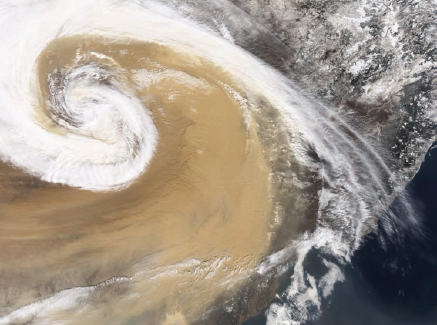Originally created in 1806 by Irish-born hygrographer and Rear Admiral Sir Francis Beaufort (1774–1857), the Beaufort Scale is a subjective way to measure wind speeds. Although the anemometer—a device for measuring wind speeds—had already been invented by Robert Hooke (1635–1703), in Beaufort’s day the device was still not widely used. Beaufort joined the navy in 1790, and by 1805 had risen to command his own ship. He had picked up hygrography along the way, and while off the coast of South America, commanding the H.M.S. Woolwich, developed his “Wind Force Scale and Weather Notation,” while conducting surveys. This scale did not use any new terminology, but rather represented Beaufort’s attempt to create standardized notation that could be used consistently by scientists. While highly praised by his superiors for his extremely detailed records, Beaufort, who became the Admiralty’s official hygrographer in 1829, was not successful in getting the Royal Navy to adapt his standards until 1838. He was knighted in 1848 and retired in 1855. Beaufort’s scale was modified in 1874 by the International Meteorological Committee, which added details about wind effects on both land and sea.

In April 2001 a huge dust storm that began in China reportedly blocked out sunlight in Jilin Province. It sent plumes of dust high into the atmosphere that were eventually carried as far as the Great Lakes. This image was taken by NASA’s Terra satellite. A 2005 study showed that large dust storms are now nearly annual events in China, though historically they used to occur only every 30 years. (NASA)

